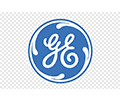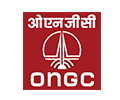Africa Cotton Market
Source: The Report Cube
Understand The Key Trends Shaping This Market
Download Free SampleAfrica Cotton Market Insights & Analysis
The Africa Cotton Market reached a value of nearly USD 5.78 billion in 2025. The market is assessed to grow at a CAGR of around 4.02%, during the forecast period of 2025-2032 to attain a value of around USD 7.32 billion in 2032. The rising textile & clothing sectors, the increasing requirement for sustainable fibers globally, and the beneficial agroclimatic conditions in chief cotton-producing countries, such as Egypt, Nigeria, and Burkina Faso, are motivating the Africa Cotton Market.
A key source of employment & export income, cotton farming is vital to Africa's agrarian economies. A substantial share of the world's raw cotton exports come from Africa’s numerous premium cotton-producing countries, most remarkably, West Africa. Also, African cotton has become more well-known on the international scene as natural & eco-friendly fibers are becoming more & more favored over synthetic clothes.
Moreover, initiatives to elevate cotton yields, boost organic farming, and construct more efficient infrastructure for cotton ginning & processing are being supported by governments & non-governmental organizations throughout the African landscape. For instance, Egypt's Ministry of Agriculture introduced a subsidy program in 2024 to inspire the manufacturing of organic cotton in Upper Egypt.
Furthermore, new sources of income are also being made by the increasing demand for cotton in the food, textile, and biofuel industries, thus instigating the Africa Cotton Market. Also, for African farmers, developments in irrigation, pest control, and genetically modified (GM) seeds are growing output & decreasing input expenses.
Besides, as a result of increasing investments in cotton processing, enhancing trading relations with Asia & Europe, and evolving sustainability trends, the Africa Cotton Market is predicted to upscale through 2032. Also, predictions for the sector are still positive, specifically for areas that can elevate their capacity for production & value-added services, hence contributing to enhancing the market share.
Africa Cotton Market Upgrades & Recent Developments
2025:
- China-Africa Cotton Development Limited declared a strategic merger with major East African textile companies to establish a vertically integrated supply chain in Tanzania, covering cotton cultivation, ginning, and textile production.
- Ivoire Coton revealed a new initiative in Côte d'Ivoire to encourage organic cotton farming, supported by government subsidies and international NGOs.

Africa Cotton Market Dynamics
-
Driver: Mounting Demand for Sustainable Textiles to Drive the Industry Growth
The textile sector is swiftly transitioning toward natural & decently sourced raw materials. Also, African cotton, well-known for its purity & long fibers, is well-positioned to gratify the demand from eco-conscious customers & brands.
-
Challenge: Low Mechanization & Infrastructure Gaps to Limit Market Expansion
Several African cotton-growing regions lack cultured agricultural equipment & efficient logistics, resulting in poorer yields & post-harvest losses while having a great amount of fertile land.
-
Opportunity: Upscale in Organic Cotton Cultivation
Organic cotton farming is gaining traction in nations like Egypt, Tanzania, and Uganda, opening access to premium international markets & enticing foreign investment.
-
Trend: Incorporation of Cottonseed in Non-Textile Divisions
The usage of cottonseed & cottonseed oil in food, animal feed, and biodiesel manufacturing is increasing, improving the industry’s diversification & cost-effectiveness.
Africa Cotton Market Segment-Wise Analysis
By Type:
- Organic
- Conventional
Conventional Cotton accounts for the potential share of the Africa Cotton Market owing to its widespread cultivation & cost-efficacy. Millions of smallholder farmers rely on it for their livelihood in West & Central Africa, where it is still the most extensively produced variety. Also, even though organic cotton is becoming more & more prevalent, conventional cotton still accounts for the majority of exports, specifically to Asia's key textile manufacturing hubs, such as China & India. Moreover, the commercial & public sectors are investing more in GM cotton variations, enhanced irrigation infrastructure, and enriched insect management to improve yields & quality. Additionally, traditional cotton is presently more commercially feasible at scale since the current ginning & export infrastructure is mainly designed to handle it.
By Application:
- Cotton Fiber
- Cottonseed
- Cottonseed Oil
Cotton Fiber is the dominant application in the Africa Cotton Market, capturing the largest market share. An essential component of the global textile & clothing sector is cotton fiber. Also, large amounts of raw cotton fiber are exported every year by African nations, such as Benin, Mali, and Burkina Faso. Moreover, the growing fashion industry in evolving economies, where natural fibers are greatly sought after for both mass-market & luxury apparel, is motivating demand. Also, from apparel to home furnishings, cotton fiber is utilized for numerous practices owing to its softness & biodegradability. The increasing demand for cotton that is supplied sustainably is predicted to improve African fiber exporters' position in global supply chains.
Country Projection of the Africa Cotton Industry
The Africa Cotton Market is geographically diversified, covering:
- South Africa
- Egypt
- Nigeria
- Algeria
- Others
Egypt stands out as the foremost country in the Africa Cotton Market by grabbing a substantial market share. Luxury textile makers love Egyptian cotton because of its exceptional texture, strength, and durability, which enable it to command premium rates in international markets. The Egyptian government has made revitalizing the cotton industry a top priority by increasing the production of organic cotton, attaining quality certifications, and doing research & development on seed varieties.
Also, large textile enterprises, specifically those in Europe, still buy their high-end product lines from Egypt. Furthermore, Egypt is also a dynamic hub for the export of both raw & processed cotton due to its progressive ginning, spinning, and weaving infrastructure, which reinforces its competitive edge across the regional landscape.
What Does Our Africa Cotton Market Research Study Entail?
- The Africa Cotton Market Research Report highlights the forecast growth rate (CAGR) by anticipating market size and share.
- The market analysis puts light upon the primary industry trends, driving aspects, potential opportunities, growth challenges, and other major factors.
- The Africa Cotton Market Research Report entails details about the most critical shifts in market share in the prominent regions.
- Considering the statistics & the developments by the primary market competitors, our report also strives to demonstrate the most sought-after strategies of the key players.
Table of Contents
- Introduction
- Objective of the study
- Product Definition
- Market Segmentation
- Study Variables
- Research Methodology
- Secondary Data Points
- Companies Interviewed
- Primary Data Points
- Break Down of Primary Interviews
- Secondary Data Points
- Executive Summary
- Market Dynamics
- Drivers
- Challenges
- Opportunity Assessment
- Recent Trends and Developments
- Policy and Regulatory Landscape
- Africa Cotton Market Overview (2020-2032)
- Market Size, By Value (in USD Billions)
- Market Share, By Type
- Organic
- Conventional
- Market Share, By Application
- Cotton Fiber
- Cottonseed
- Cottonseed Oil
- Market Share, By Region
- South Africa
- Egypt
- Nigeria
- Algeria
- Others
- Market Share, By Competitors
- Competition Characteristics
- Revenue Shares
- Africa Organic Cotton Market Overview, 2020-2032F
- By Value (USD Million)
- By Application- Market Size & Forecast 2019-2030, USD Million
- Africa Conventional Cotton Market Overview, 2020-2032F
- By Value (USD Million)
- By Application- Market Size & Forecast 2019-2030, USD Million
- Competitive Outlook (Company Profile - Partila List)
- China-Africa Cotton Development Limited
- Company Overview
- Business Segments
- Strategic Alliances/Partnerships
- Recent Developments
- Olam Agri Holdings Pte Ltd
- Company Overview
- Business Segments
- Strategic Alliances/Partnerships
- Recent Developments
- JMV Textiles (Pty) Ltd.
- Company Overview
- Business Segments
- Strategic Alliances/Partnerships
- Recent Developments
- Standerton Mills, Cottco (Pvt) Ltd.
- Company Overview
- Business Segments
- Strategic Alliances/Partnerships
- Recent Developments
- Ivoire Coton
- Company Overview
- Business Segments
- Strategic Alliances/Partnerships
- Recent Developments
- Compagnie Malienne pour le Développement des Textiles (CMDT)
- Company Overview
- Business Segments
- Strategic Alliances/Partnerships
- Recent Developments
- Others
- Company Overview
- Business Segments
- Strategic Alliances/Partnerships
- Recent Developments
- China-Africa Cotton Development Limited
- Contact Us & Disclaimer
List of Figure
- Market Segmentation of Africa Cotton Market
- Africa Cotton Market Size, By Value (USD Billion), 2020-2032
- Africa Cotton Market Share, By Type (Organic vs. Conventional), 2020-2032
- Africa Cotton Market Share, By Application (Cotton Fiber, Cottonseed, Cottonseed Oil), 2020-2032
- Africa Cotton Market Share, By Region (South Africa, Egypt, Nigeria, Algeria, Others), 2020-2032
- Competitive Landscape: Revenue Share of Key Players in Africa Cotton Market
- Africa Organic Cotton Market Size, By Value (USD Million), 2020-2032
- Africa Organic Cotton Market Share, By Application, 2020-2032
- Africa Conventional Cotton Market Size, By Value (USD Million), 2020-2032
- Africa Conventional Cotton Market Share, By Application, 2020-2032
- Strategic Alliances & Partnerships of Key Market Players (China-Africa Cotton, Olam Agri, JMV Textiles, etc.)
- Recent Developments in Africa Cotton Market (Mergers, Acquisitions, Expansions)
List of Table
- Study Variables & Research Methodology
- Primary & Secondary Data Sources
- Breakdown of Primary Interviews
- Africa Cotton Market Size, By Value (USD Billion), 2020-2032
- Historical Data (2020-2023)
- Forecast (2024-2032)
- Africa Cotton Market Share, By Type (Organic vs. Conventional), 2020-2032
- Market Size (USD Million)
- Growth Rate (CAGR %)
- Africa Cotton Market Share, By Application (Cotton Fiber, Cottonseed, Cottonseed Oil), 2020-2032
- Market Size (USD Million)
- Growth Trends
- Africa Cotton Market Share, By Region (South Africa, Egypt, Nigeria, Algeria, Others), 2020-2032
- Country-wise Market Size (USD Million)
- Growth Projections
- Competitive Landscape: Key Players in Africa Cotton Market
- Market Share (%) of Leading Companies
- Revenue Comparison
- Africa Organic Cotton Market Overview, 2020-2032
- Market Size (USD Million)
- Application-wise Breakdown
- Africa Conventional Cotton Market Overview, 2020-2032
- Market Size (USD Million)
- Application-wise Breakdown
- Company Profiles: Key Players in Africa Cotton Market
- China-Africa Cotton Development Limited
- Business Segments
- Strategic Alliances
- Olam Agri Holdings Pte Ltd
- Revenue Breakdown
- Recent Developments
- JMV Textiles (Pty) Ltd.
- Market Presence
- Expansion Strategies
- Standerton Mills, Cottco (Pvt) Ltd.
- Production Capacity
- Key Partnerships
- Ivoire Coton
- Market Share in West Africa
- Government Policies Impact
- Compagnie Malienne pour le Développement des Textiles (CMDT)
- Export-Import Trends
- Sustainability Initiatives
- China-Africa Cotton Development Limited
- Policy and Regulatory Landscape in Africa Cotton Industry
- Key Government Regulations
- Trade Policies Impacting Cotton Market
- Recent Trends & Developments in Africa Cotton Market
- Technological Advancements
- Mergers & Acquisitions
Top Key Players & Market Share Outlook
- China-Africa Cotton Development Limited
- Olam Agri Holdings Pte Ltd
- JMV Textiles (Pty) Ltd.
- Standerton Mills, Cottco (Pvt) Ltd.
- Ivoire Coton
- Compagnie Malienne pour le Développement des Textiles (CMDT)
- Others
Frequently Asked Questions








